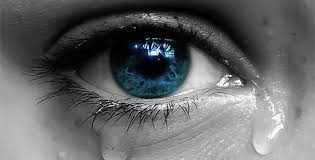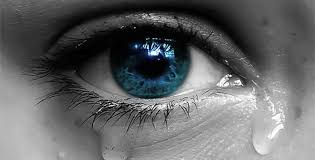
A gel laden with gold nanoparticles has bene developed by a group of researchers at the University of Illinois (UI). The nanoparticles react with a teardrop which has containing ascorbic acid that is released from a wound to the eye to change color of the gel.
The study has been newly published in the journal Biosensors and Bioelectronics.
This research can be used for identification of injury in the eye as it can measure the levels of ascorbic acid in a tear drop. The practical application of the study is the sensor called OjoGel can be used for detecting injury in the eye very quickly.
A change in the color of OjoGel through the reaction can be cause by just a tiny teardrop. The degree to which the color changes in the get is an indication and is directly related to the extent of the concentration of ascorbic acid in the tear sample. Typically, the color changes from pale yellow to a dark reddish-brown with the increase in the concentration of the acid in the tear drop.
To ascertain the level of concentration off the acid in every tear drop in relation to the degree of color change, extensive testing was done by the researchers. And in order to be able to precisely measure the concentration of the acid in a tear drop by the reaction with the gel sample, the researchers have also developed a color key and a set of guidelines that can be used through a mobile phone app called Pixel Picker.
Earlier research at the UI has determined that a good measure for determining the extent of injury to the eye is the concentration of ascorbic acid. Typically, there is a very low concentration of ascorbic acid in tears.
"Deep damage to the cornea from trauma or incisional surgery releases aqueous humor into the tear film, which increases the concentration of ascorbic acid in tears to a measurably higher level than that found in normal eyes," said study leader Dipanjan Pan, a UI professor of bioengineering and the Carle Illinois College of Medicine. "OjoGel offers a unique biosensing technique that provides an effective and simple method for testing ascorbic acid in a point-of-care delivery system."
As a further extension of the current research, the researchers have drawn up plans to further refine the OjoGel technology so that they are able to develop a low-cost and easy-to-use clinical device that can be used practically. The researchers would also conduct clinical studies to so that they are able to identify the extent of reliability of the evaluation of eye damage with the use of OjoGel readings.
(Source:www.xinhuanet.com)
The study has been newly published in the journal Biosensors and Bioelectronics.
This research can be used for identification of injury in the eye as it can measure the levels of ascorbic acid in a tear drop. The practical application of the study is the sensor called OjoGel can be used for detecting injury in the eye very quickly.
A change in the color of OjoGel through the reaction can be cause by just a tiny teardrop. The degree to which the color changes in the get is an indication and is directly related to the extent of the concentration of ascorbic acid in the tear sample. Typically, the color changes from pale yellow to a dark reddish-brown with the increase in the concentration of the acid in the tear drop.
To ascertain the level of concentration off the acid in every tear drop in relation to the degree of color change, extensive testing was done by the researchers. And in order to be able to precisely measure the concentration of the acid in a tear drop by the reaction with the gel sample, the researchers have also developed a color key and a set of guidelines that can be used through a mobile phone app called Pixel Picker.
Earlier research at the UI has determined that a good measure for determining the extent of injury to the eye is the concentration of ascorbic acid. Typically, there is a very low concentration of ascorbic acid in tears.
"Deep damage to the cornea from trauma or incisional surgery releases aqueous humor into the tear film, which increases the concentration of ascorbic acid in tears to a measurably higher level than that found in normal eyes," said study leader Dipanjan Pan, a UI professor of bioengineering and the Carle Illinois College of Medicine. "OjoGel offers a unique biosensing technique that provides an effective and simple method for testing ascorbic acid in a point-of-care delivery system."
As a further extension of the current research, the researchers have drawn up plans to further refine the OjoGel technology so that they are able to develop a low-cost and easy-to-use clinical device that can be used practically. The researchers would also conduct clinical studies to so that they are able to identify the extent of reliability of the evaluation of eye damage with the use of OjoGel readings.
(Source:www.xinhuanet.com)














